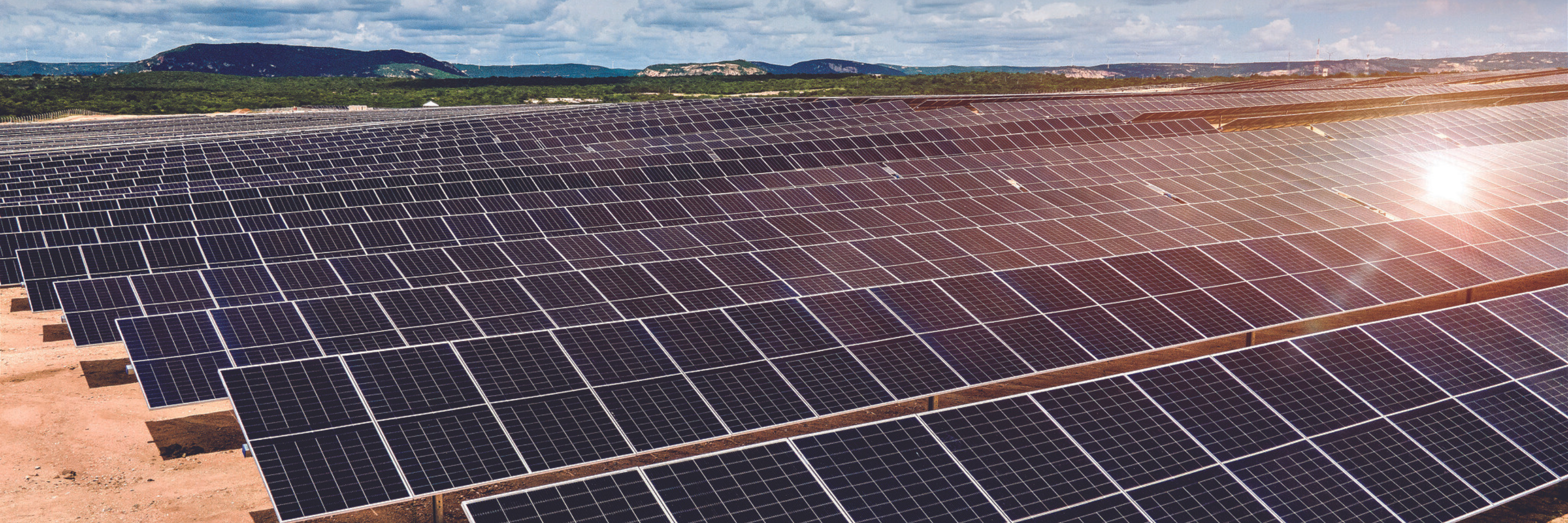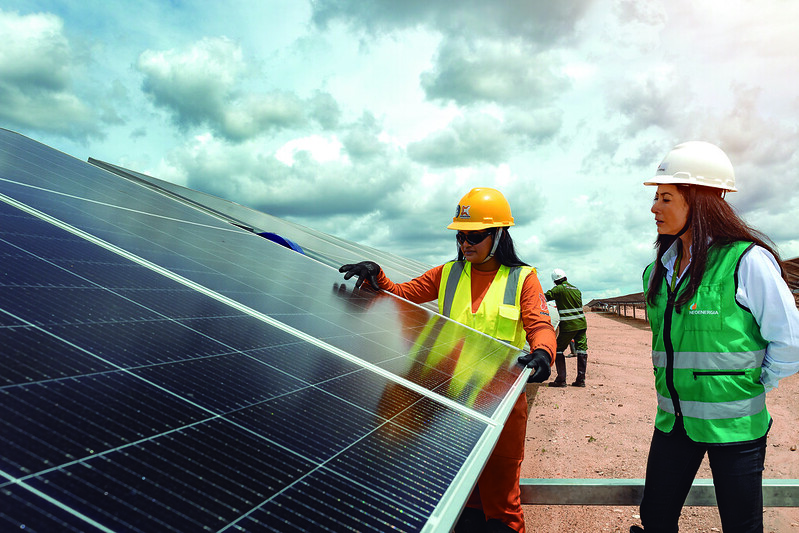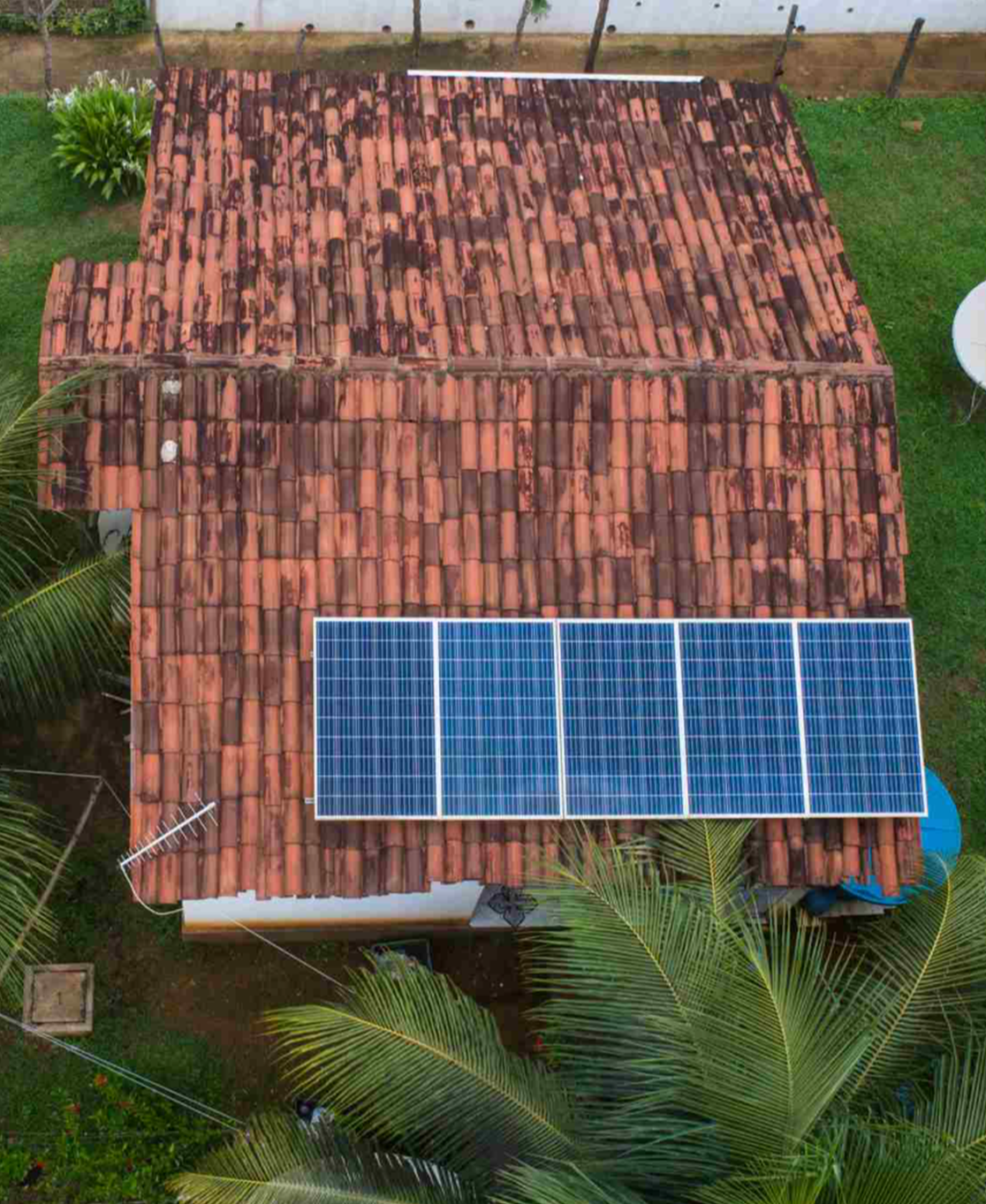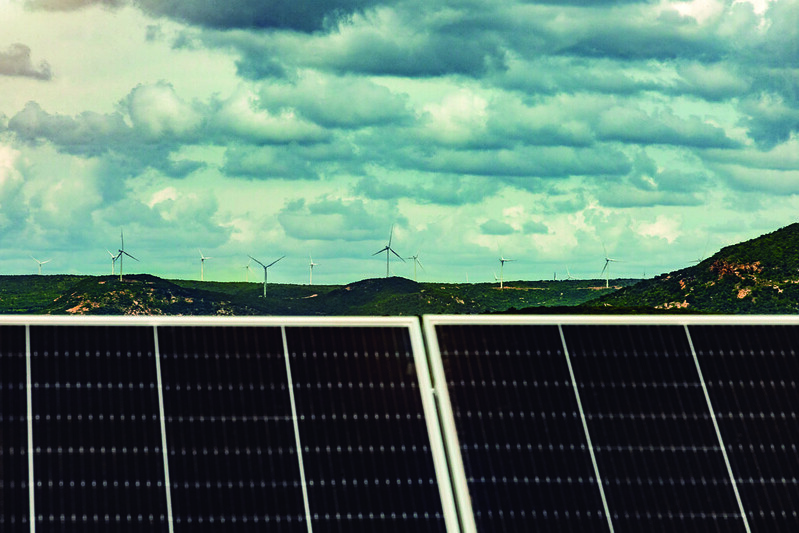
Solar Energy
Coming from the light and heat of the sun, solar energy is clean, renewable and is growing in Brazil and in the world.
In March 2023, Neoenergia inaugurated the Neoenergy Luzia solar complex, the company's first for centralized, large photovoltaic solar generation, whose production is fully sold on the free market. Located in Paraíba, the project has an installed capacity of 149.3 MWp, enough energy to supply more than 100,000 homes.
What is solar energy?
Solar energy is energy generated by the light and heat emitted by the sun. It is associated with the clean and primary generation of electricity because it is sustainable, renewable and comes from a natural resource, including that we have a high origin in Brazil, especially in the Northeast.
How was solar energy discovered?

How does solar energy work?
In order for the light and heat of the sun to be converted into electricity, it is necessary to install means to capture and transform it. See what they are:
Photovoltaic system
Panels, modules, and equipment are installed to directly convert solar radiation into electrical energy. This entire process occurs through the contact of photons (particles that make up light, present in the Sun) with specific materials, such as silicon, which is a semiconductor and causes the release of electrons. Result: electric current.
One type of solar energy, photovoltaic solar energy, is the result of this combination. And did you know that high radiation is not necessary for a photovoltaic system to work well? In fact, the density of the clouds is what makes the difference—the less in the sky, the more electricity will be produced.
Heliothermic system (thermosolar energy)
Widely used in hotels and clubs, this type of solar energy, unlike photovoltaic, is indirect. This is because the sun's heat is captured and stored and then transformed into mechanical solar energy and only then into electricity.
For these steps, solar panels are used that reflect sunlight and concentrate it on a liquid-filled receiver. This liquid turns to vapor with the incoming heat and turbines are powered by it. In motion, they finally generate electrical energy.
Solar heating system
Vacuum plates or tubes are used as solar collectors and a thermal reservoir, called a boiler, stores the water that will be heated by the system, to be later used by the consumer.
It is worth mentioning, however, that this type of system only captures and transfers the heat of solar radiation, without generating electricity such as photovoltaic and thermosolar energy. But despite the restriction, it has been present in Brazil since the 1970s, in homes and businesses.
Advantages of the solar energy system
Clean energy: it does not release pollutants into the atmosphere, it is a sustainable option. According to the Brazilian Photovoltaic Solar Energy Association (Absolar), between 2012 and 2022 more than 17.5 million tons of CO2 were avoided by using a photovoltaic solar source.
Reduction of the electricity tariff: the amount of the electricity bill can be reduced by 50 to 95% when opting for solar energy. The government offers several incentives for those who choose renewable sources of consumption.
Widely available: Brazil's climate favors this type of energy, due to the high incidence of sunlight and clear skies almost all year round in much of the country. Not to mention that places that are difficult to access, with no structure for an electrical grid, can be supplied by solar energy.
Profitable investment: solar panels last an average of 25 years. And properties with this type of installation tend to appreciate over time. According to specialists in the real estate sector, the increase can reach up to 30%.
Where can solar energy be used?
There are currently two types of solar generation: distributed generation (GD) and centralized generation (GC).
Residential Solar Energy
In Brazil, the distribution company has small and medium-sized photovoltaic solar systems, with an installed capacity of up to 5 MW (MegaWatt), installed in places such as houses and buildings, producing energy for its own consumption. With this power, it is possible to supply residential customers or small and medium-sized businesses.
A 10kWp residential system (kilowatt-peak, a unit of measurement normally used in solar energy), for example, generating energy for one day, produces enough to supply seven electric showers for one hour each.
On the Neoenergia Products and Solutions page, it is possible to simulate the installation values of solar panels and the purchase of the system. The company offers customized solutions to make your home efficient and sustainable.

Large Solar Energy
Centralized solar generation includes projects over 5 MW, such as large power plants. An example is the Neoenergia Luzia solar complex, located in Paraíba. The power of the park, built by NeoEnergia, is 149.3 MWp (Megawatt-peak), enough to supply more than 100,000 homes.
News
2025-12-22
Neoenergia abre inscrições para sua primeira turma da Escola de Operadores do Centro de Operações Integradas
2025-12-19
Novo filme da Neoenergia sobre Natal reforça presença da marca com clientes
2025-12-12
Prêmio Brasil Olímpico 2025: Neoenergia reforça compromisso com esporte feminino no país
2025-12-09
Prêmio Aberje 2025: Neoenergia é campeã nacional com campanha sobre segurança na rede elétrica com Carlinhos Brown
2025-12-01

